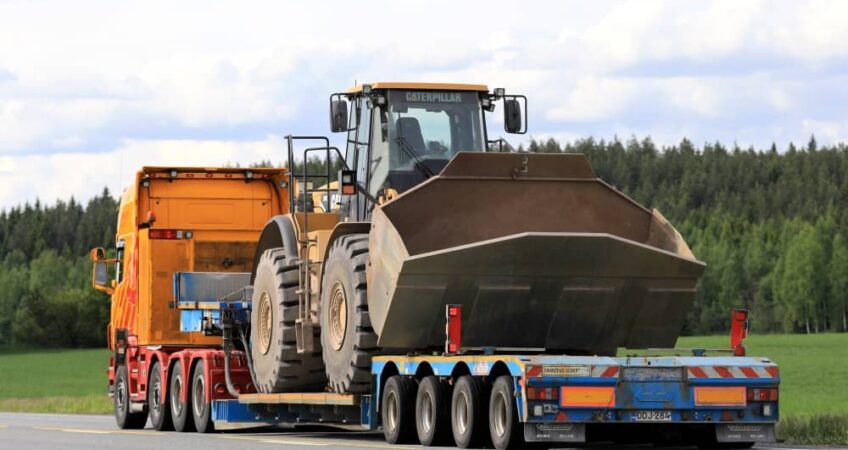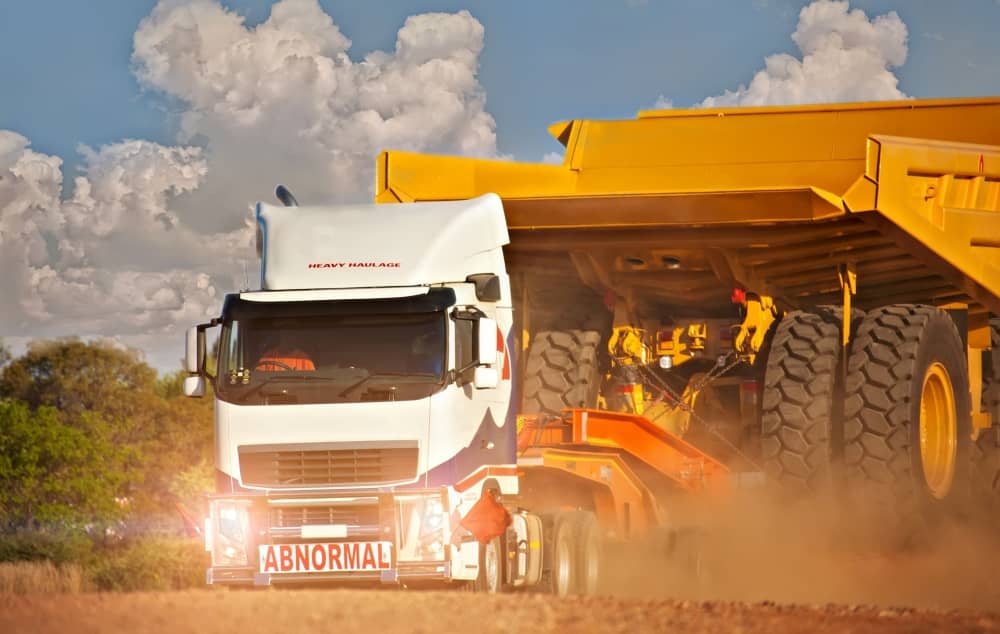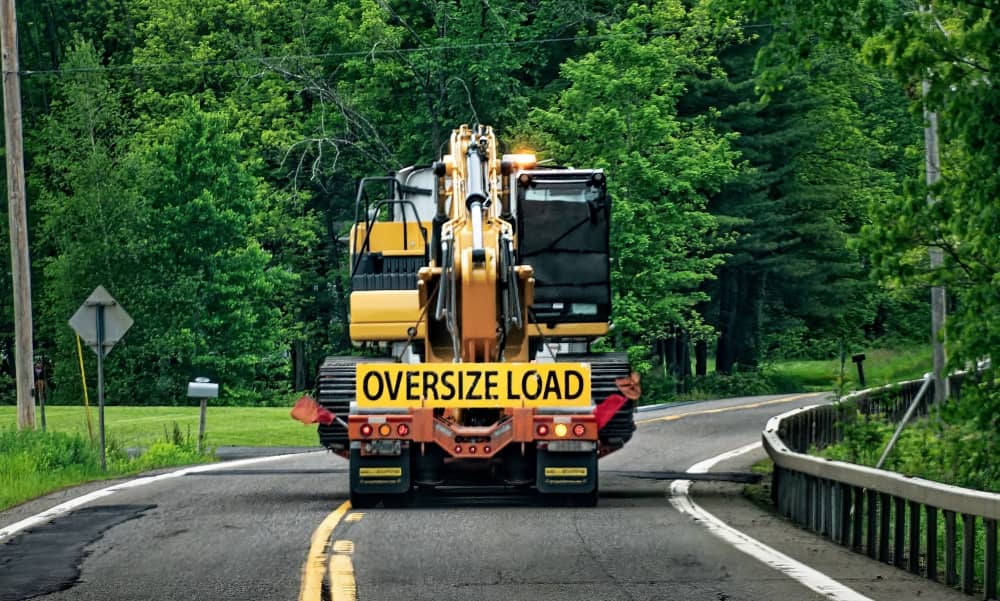
At Australia Wide Haulage, we understand the much care and attention transporting large and delicate items requires. Our team takes great precautions to ensure your heavy equipment and machinery arrive at their new destination in one piece, but what else do you need to consider?
In this blog post, we cover everything you need to know about heavy equipment & machinery transport to know how to prepare, what it entails and how to make the process go over smoothly.
Need a Haulage Partner? Call Us
Common Types of Heavy Machinery to Transport
Heavy machinery that hauling companies transport includes:
- Earthmoving
- Mining
- Farming
- Construction
- Industrial equipment
Using our extensive fleet, we deliver your load wherever you need it.
Earthmoving Machinery
These are heavy machinery used to move materials and objects around a construction site. They dig, excavate, fill, grade, and move soil in land development and large-scale construction projects. Earthmoving machinery includes bulldozers, backhoes, scrapers, and graders.
Bulldozers are heavy-duty machines moving earth and materials around a construction site. They feature large, wide treads on their tracks, allowing them to move with ease. Bulldozers have different attachments for special applications such as land clearing and grading. They are also used for digging, moving soil and rocks, hauling materials, and compacting the earth.
Backhoe Loaders are versatile machinery used for digging, excavating, material handling, and hauling. They have a front-mounted bucket and a rear-mounted backhoe attachment, ideal for digging deep trenches or holes. The loader also has hydraulic arms that move and lift heavy materials.
Farming Machinery
Farming Machinery is used for agricultural operations like tilling, harvesting, planting, and fertilizing. Farming machinery includes tractors, combine harvesters, balers, mowers, and planters.
Tractors are the most versatile farming machinery. They are indispensable tools for agricultural operations. Tractors plough fields, cultivate the soil, haul materials, and transport goods. You can also fit tractors with different attachments, such as front-end loaders and backhoes. These extensions expand their abilities for different applications.
Combine harvesters are large and powerful machines used in the farming and agricultural industry. They cut, thresh, and clean grain crops such as wheat, corn, oats, barley, soybeans, and alfalfa. Combines have a rotating header that cuts the crop while the reel helps align it and feed it into the threshing cylinder. Australia Wide Haulage provides transportation for these large farm equipment to and from a job site as required.
Mining Equipment
Mining Equipment is essential for extracting minerals and resources from the earth. This heavy machinery includes drillers, crushers, loaders, excavators, and dump trucks. With their powerful engines and large size, these pieces of equipment dig deep into the earth to extract mineral resources.
You May Also Like: How Are Mining Trucks Transported: A Step-by-Step Guide
Preparations for Heavy Machinery Transport
Heavy machinery transport requires extensive preparations. It guarantees the bulky and delicate cargo’s safe and efficient movement. Before transportation begins, hauling company professionals thoroughly assess the machinery. They ensure it is in proper working condition. They also ensure it is well packaged for transport. These are steps that a competent company like Australia Wide Haulage follows to transport heavy machinery.
Full Risk Assessment
The hauling company must conduct a full risk assessment to transport heavy machinery. They must identify any potential risks associated with the transport process. They minimize risks to ensure a safe and successful operation. Such risks include potential damage to property, personnel, or the environment. These risks could be due to sudden changes in terrain or weather conditions that could lead to an accident.
Confirm the hauling team has protective clothing, equipment, and specialized vehicle configurations. Check the type of machinery being transported. Examine how large, heavy, or fragile the machine is and how much protection it requires against the elements. This information determines the best route and mode of transport. It also determines the requisite protective measures during transportation.
Use the Right Tools
Determine what types of vehicles, tools, and machinery should move the equipment. For example, larger or heavier machines require a crane for lifting and loading onto trailers. Smaller or lighter items can use dollies and manual transport equipment. Have specialized tools on hand designed to haul heavy machinery. They include straps, winches, chains, and lifting equipment that secure the load for transport. Use the machinery’s right type of connectors and fittings to fasten it during transport.
How to Prepare for Heavy Machinery Transport
Transporting heavy machinery is a complex process requiring careful planning and preparation. Consider the machinery’s weight, size, and destination dictate what type of transport vehicle. Lubricate all moving parts, and confirm that safety precautions are in place. Confirm the machinery is secured to the transport vehicle.
Obtain the needed permits depending on where you are located. You may need a special permit to move heavy machinery over state or county lines. You also must ensure the roads you plan to take are properly cleared for such a large vehicle. Have a backup plan in case of a breakdown or unexpected events. Prepare to make emergency repairs along the way, and always carry extra fuel, fluids, and spare parts.
Tips for Moving Heavy Equipment and Machinery
1. Prepare the Equipment
Ensure the equipment is securely fastened and ready for transport. Remove any loose parts because they may be damaged or cause obstruction. If possible, don’t take any unneeded attachments or components.
2. Use Proper Lifting Techniques
When lifting heavy machinery, use proper body mechanics to ensure safety and prevent injuries. To lift the machines without harm, use a crane if available. The crane should be well-maintained and meet safety regulations.
3. Choose the Right Transportation Method
Heavy equipment and machinery can be transported using a flatbed, an enclosed trailer, or hiring a specialized mover. Always transport heavy machinery using the necessary tools and vehicles to avoid damaging it and for safety reasons.
4. Secure the Load
When transporting heavy machinery, ensure it is firmly fastened and won’t move during transport. Use straps or chains to tie down the equipment, and ensure the straps are well secured.
5. Inspect Your Path Before Proceeding
Double-check your path before moving heavy equipment, as it is harder to stop mid-movement. Measure any turns or dips to ensure your machinery fits through them. Consider obstacles like power lines, trees, and structures along your path. Make arrangements with local authorities to have any obstructions removed where applicable.
Contact AWH to Move Your Heavy Machinery
Australia Wide Haulage is a perfect choice for heavy machinery or haulage transport. We provide clients with the best quality service in the industry, and specialize in delivering heavy machinery safely to your location, regardless of size or weight. Contact us today for more information or to get started on your next project!


